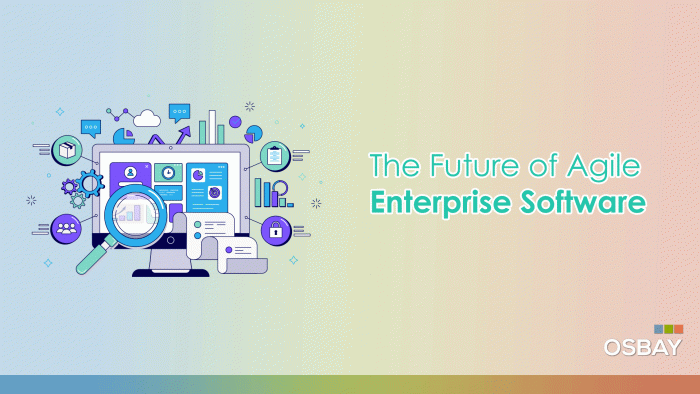Introduction: The New Digital Reality
In today’s fast-paced digital landscape, organizations must rapidly adapt to shifting market dynamics and emerging technologies. Traditional, monolithic software systems often hinder this agility, creating barriers to innovation, scalability, and cost-efficiency.
To overcome these challenges, leading enterprises are turning to composable enterprise architecture—a modern, modular approach that enables businesses to create agile, scalable, and easily customizable software systems. With its emphasis on flexibility and innovation, composable enterprise architecture is becoming a cornerstone of digital transformation strategies across industries.
What Is Composable Enterprise Architecture?
Composable enterprise architecture is a software design approach that organizes business capabilities into loosely coupled, reusable components. Each component serves a specific function and can be independently developed, deployed, and scaled.
Rather than building large, monolithic applications, organizations use composable systems composed of interchangeable parts. These parts communicate through standardized interfaces like APIs or events, allowing them to be quickly reconfigured in response to changing needs.
Core Principles of Composable Architecture
- Modularity: Systems are built from independent components.
- Autonomy: Each component can operate and evolve independently.
- Interoperability: Seamless communication between modules using APIs and other standard protocols.
- Discoverability: Components are easy to find, understand, and reuse across the enterprise.
This approach allows composable enterprise architecture to support continuous delivery, real-time responsiveness, and faster innovation.
Benefits of Composable Enterprise Architecture
1. Enhanced Business Agility
With composable enterprise architecture, organizations can rapidly assemble and reassemble components to meet new market demands. Whether launching a new product or adjusting to regulatory changes, enterprises gain the speed and flexibility needed to stay ahead of the curve.
2. Scalable and Resilient Systems
Modular components make it easier to scale services up or down based on demand. If one component fails, the rest of the system remains unaffected, ensuring greater fault tolerance and system resilience.
3. Cost and Resource Efficiency
Reusable components reduce duplication of work and development costs. By leveraging cloud-native technologies, companies can scale on demand and pay only for what they use. This makes composable enterprise architecture not just effective but economically smart.
4. Accelerated Innovation
Teams can work on different components in parallel, significantly reducing development cycles. Components can also be swapped out or updated independently, allowing for quick experimentation and deployment of new features.
5. Simplified Governance and Compliance
With clear ownership and standardized interfaces, components are easier to govern and audit. Enterprises can enforce security, compliance, and version control at the component level.

Key Technologies Powering Composable Enterprise Architecture
Microservices
Microservices are the building blocks of composable enterprise architecture. Each microservice performs a specific business function and communicates with others through APIs or events. They enable granular scalability and fast deployment.
APIs and API Gateways
APIs are critical for enabling communication between modular components. API gateways manage traffic, ensure security, and simplify access to services across the architecture.
Event-Driven Architecture
In an event-driven model, system components respond to events (like a new customer order or inventory update) in real time. This supports loosely coupled interactions and increases responsiveness across the enterprise.
Serverless Computing
Serverless platforms allow developers to deploy code in response to events without managing infrastructure. This enables even greater flexibility and faster development within a composable enterprise architecture.
Implementing Composable Enterprise Architecture: A Step-by-Step Guide
Step 1: Assess Your Current Landscape
Begin with an in-depth analysis of your existing systems. Identify technical debt, integration issues, and legacy components that may need refactoring.
Step 2: Define Core Business Capabilities
Break down your organization’s operations into modular business capabilities—such as billing, inventory management, or customer onboarding. Each capability should become a candidate for a separate component in your architecture.
Step 3: Establish Component Boundaries
Using domain-driven design, define clear boundaries around each component. Make sure every component has its own lifecycle, data ownership, and interface contract.
Step 4: Choose Enabling Technologies
Select technologies that support modularity, such as:
- Kubernetes for orchestration
- Kafka or RabbitMQ for event streaming
- AWS Lambda or Azure Functions for serverless
- Apigee or Kong for API management
Step 5: Start with a Pilot
Implement a pilot project using composable enterprise architecture principles. Focus on a high-impact area that can demonstrate value quickly and guide broader transformation.
Step 6: Monitor, Optimize, and Scale
Use observability tools to monitor performance, uptime, and user behavior. Iterate frequently, optimize components, and gradually expand your architecture across business functions.
Common Challenges and How to Overcome Them
Legacy Integration
Older systems weren’t designed with modularity in mind. Use middleware, service wrappers, or integration platforms to bridge the gap while gradually replacing legacy components.
Data Management Complexity
Distributed components mean distributed data. Adopt strategies like event sourcing, data mesh, and shared-nothing architecture to manage consistency and access.
Security and Compliance
Security must be embedded into each component. Implement robust API security, token-based authentication, and encrypted data flows across the system.
Cultural and Organizational Shift
True adoption of composable enterprise architecture requires new ways of working. Invest in DevOps practices, cross-functional teams, and training to empower engineers and business users alike.
Real-World Use Cases of Composable Enterprise Architecture
Retail
A global retailer used composable enterprise architecture to create a personalized shopping experience. By integrating third-party recommendation engines and internal inventory services, they reduced downtime by 80% and increased conversions by 30%.
Banking and Financial Services
A multinational bank rebuilt its payment platform using modular components. This enabled them to add support for new payment methods in weeks instead of months and implement real-time fraud detection.
Healthcare
A healthcare provider integrated electronic health records across systems using an event-driven, API-first architecture. As a result, they enhanced patient care through real-time data access and launched telehealth features without disrupting existing systems.
Future Trends Shaping Composable Enterprise Architecture
AI and Machine Learning as Modular Services
AI capabilities like sentiment analysis, predictive analytics, and recommendation engines will increasingly be available as plug-and-play components. Enterprises can embed these into existing workflows without rewriting core applications.
Multi-Experience Platforms
From web and mobile apps to voice assistants and AR, organizations will use composable enterprise architecture to deliver consistent, omnichannel experiences using shared backend services.
Low-Code/No-Code Platforms
Business users will increasingly assemble applications using visual tools that leverage prebuilt components. This democratizes development and speeds up innovation cycles.
Edge Computing and IoT
Edge devices will operate autonomously using local components that communicate with cloud-based services only when needed. This architecture is particularly suited for real-time IoT applications in manufacturing, logistics, and healthcare.
Frequently Asked Questions
What makes composable enterprise architecture different from traditional architecture?
Unlike monolithic architectures, composable enterprise architecture breaks down software into modular, reusable components that can evolve independently.
Can composable enterprise architecture work with legacy systems?
Yes, with the right integration tools and strategies, legacy systems can be wrapped or gradually replaced within a composable framework.
Is composable enterprise architecture only for tech companies?
Not at all. Industries from healthcare to finance to retail are successfully using composable enterprise architecture to gain agility and competitive advantage.
What are the risks of adopting composable architecture?
Without clear governance, security, and training, modular systems can become disorganized. A strong strategy and phased implementation are key.
Conclusion: Why Composable Enterprise Architecture Is the Future
Composable enterprise architecture is more than just a trend—it’s a fundamental shift in how enterprises build, manage, and scale software systems. By embracing modularity, autonomy, and interoperability, organizations unlock the agility needed to thrive in a digital-first world.
Whether your goal is faster innovation, better customer experiences, or operational efficiency, composable enterprise architecture provides the blueprint. As emerging technologies like AI, IoT, and low-code platforms accelerate digital transformation, composable systems will be the foundation for the next generation of agile enterprises.
Now is the time to break free from rigid legacy systems and embrace the future with composable enterprise architecture.

